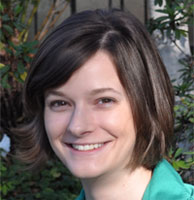About This Webinar
In this webinar you will learn about a new technique, called sonoillumination, which uses ultrasound in conjunction with a clinical laser for procedures such as the removal of birthmarks and tattoos. Sonoillumination transmits laser light through direct contact with the skin rather than through open air. Using the device, dermatologists are better able to see and access their target, and thus treat the target more effectively. A safe environment for physician and patient is maintained throughout treatment, because the laser only works when it is in direct contact with the skin. The ultrasound is applied throughout the procedure to alter the optical properties of the skin and further improve therapeutic effectiveness by increasing the transmission of light through the epidermis by as much as 174 percent.
The webinar will begin with an overview of current approaches to laser-based dermatological treatments and their limitations, and will then introduce sonoillumination. The presenters will review the technology, the experimental methods used to test the device, and results. They will discuss the impact of the results from a clinical standpoint and potential future uses for sonoillumination.
The sonoillumination device was developed and tested by a multidisciplinary team that includes a clinician, an associate professor of bioengineering and a biomedical engineer.
About the presenters:
 Nicholas Golda, M.D.
Nicholas Golda, M.D., is an associate professor of dermatology, medical director of dermatology clinics and director of dermatologic surgery at University of Missouri Health. As the program director for the Micrographic Surgery and Cutaneous Oncology fellowship program, he educates the next generation of fellowship-trained dermatologic surgeons. Dr. Golda focuses on translational research in collaboration with several basic science faculty at the University of Missouri. Current projects are focused on improvements in the diagnosis and treatment of melanoma and development of new technologies to make office procedures such as laser and outpatient surgery safer and more efficient. He received his medical degree from Keck School of Medicine of the University of Southern California.
 Heather Hunt, Ph.D.
Heather Hunt, Ph.D., is an associate professor in the Bioengineering Department at the University of Missouri-Columbia. She also holds a courtesy appointment in the Department of Dermatology in the School of Medicine. Hunt received her B.S. in chemical engineering from Iowa State University in 2004, and her M.S. and Ph.D. in chemical engineering from the California Institute of Technology in 2007 and 2009, respectively. Her work explores the physical properties of advanced materials for optics, electronics and environmental applications with a focus on the development of new techniques that allow tailoring of optoelectronic material properties at the molecular level.
 Paul Whiteside, Ph.D.
Paul Whiteside, Ph.D., is a biomedical engineer. He received his B.A. and M.A. in biological engineering, and his Ph.D. in bioengineering, from the University of Missouri-Columbia in 2010, 2015 and 2017, respectively. Whiteside has worked as an R&D engineer and co-founded Medical Photonics Industries (MPI) in 2013 to commercialize patented technologies developed to address clinical needs in laser medical diagnostics and therapeutics. He is the inventor of sonoillumination, a technology that combines high-frequency ultrasound and laser irradiation to improve light transmission by up to 174 percent.